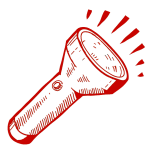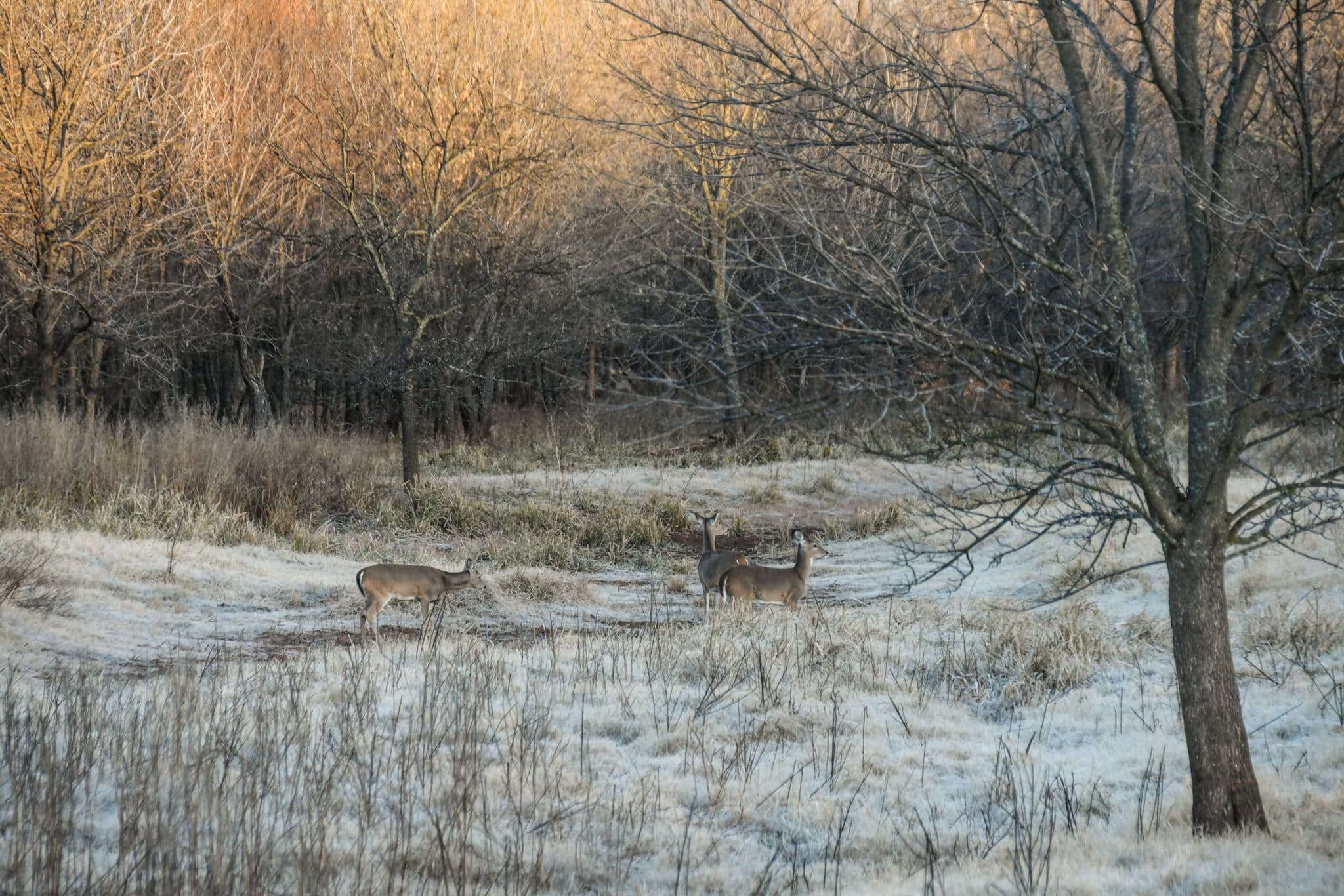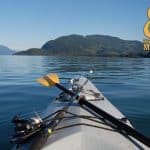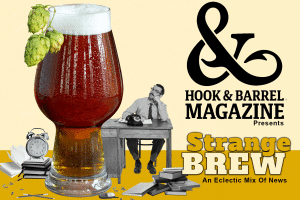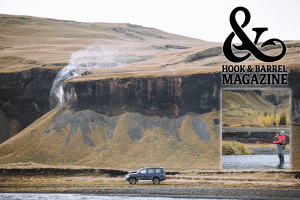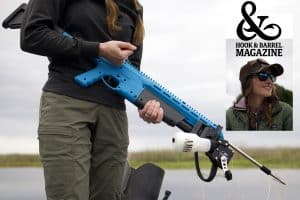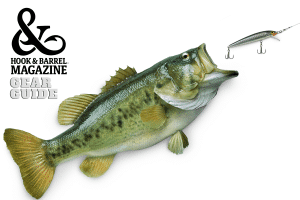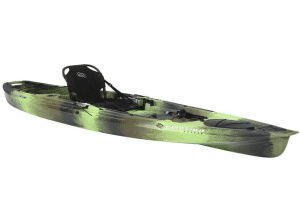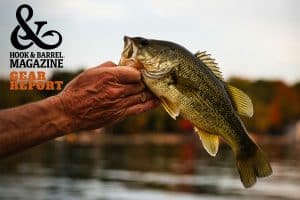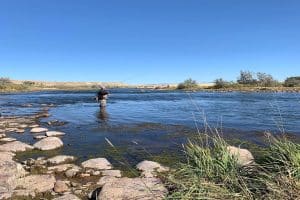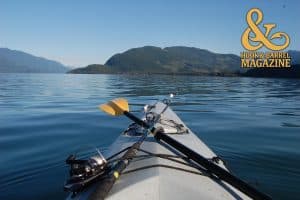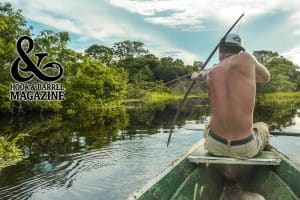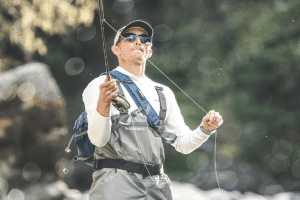- By Glenn Hunter
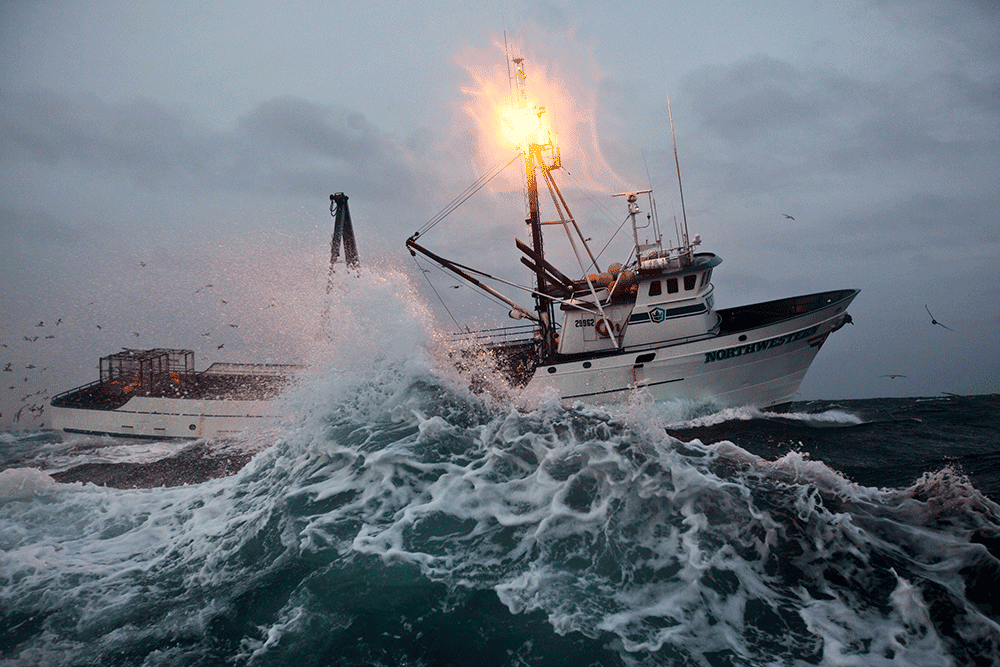
Deadliest Catch star Sig Hansen continues to be excited by the risks and rewards of commercial crab fishing.
Captain Sig Hansen was up in the wheelhouse of his F/V Northwestern fishing vessel one recent afternoon, happy to be out in the Bering Sea again after being stranded for days in the port of Dutch Harbor in Alaska’s Aleutian Islands.
Hansen, a star of the Discovery Channel’s hit reality series Deadliest Catch, was headed north during the opilio snow crab fishing season, accompanied by his crew and members of the program’s documentary team.
The time stuck in port had been “pretty tragic” for the Northwestern, Hansen was recalling, after crew members were forced to quarantine when someone on board came down with COVID-19. As if that weren’t enough, the boat had also suffered a “crane calamity,” and still more time had been chewed up making repairs.

Now, even though he was back at sea, Hansen was worried about potential problems with the Northwestern’s “pots”—the big, cube-shaped, steel-framed traps that professional crab fishermen drop to the ocean floor to lure and capture their prey. His first pots were still about 200 miles away as the Northwestern made for its next fishing destination off the coast of Russia. “We’re fishing nearby the ice edge, which is pretty normal, so we’ve had a lot of risk. Our pots are at risk,” Hansen says, speaking to me over a satellite phone. “If we lose our pots, we lose our fishing, we lose our money. So I’m trying to get the heck out of town to save my pots. This is the real deal.”
Hansen has been part of Deadliest Catch’s real deal ever since the show debuted in 2005, serving not only as a lead captain but also as the production’s technical adviser. The program, now in its 17th season on Discovery and the discovery+ streaming service, follows a fleet of crab fishermen in the icy Bering Sea during the Alaskan king crab and snow crab fishing seasons.

The series got its name because crab fishing is considered one of the world’s most dangerous jobs. Under Hansen, the 125-foot-long Northwestern has an outstanding safety record, with a crew that includes Hansen’s younger brothers Edgar and Norman; his daughter, Mandy Hansen Pederson, and Mandy’s husband, Clark Pederson.
The secrets to operating a safe boat, Hansen says, are planning ahead for bad weather, knowing your vessel’s limitations, and trusting your crew. “For me it’s very scary, because we have so many family members, and it is a family owned and operated vessel,” says Hansen, “It does add a lot of pressure for me, because you don’t want to hurt anybody, and you certainly don’t want to have a family member lost at sea or hurt on board. But, you’ve still got to be aggressive and go for it, so it makes it more stressful, It also makes it more fun at times. We’re proud as a family together. You don’t see a lot of family owned and operated vessels these days. Big corporations are buying them up, and that whole mom-and-pop thing is kind of going by the wayside, even in our fisheries.”
Influenced by His Norwegian Heritage
Family ties are all-important to Sigurd Jonny “Sig” Hansen, who hails from a long line of fishermen with Norwegian ancestry. He was born to Snefryd Hansen and her husband Sverre Hansen—both from an area in Norway called Karmoy—in Seattle’s Ballard neighborhood, the epicenter of that city’s Nordic heritage. Sig’s father helped pioneer the opilio crab fishing industry in Alaska and, in 1977, built the Northwestern (originally 108 feet long, the boat has been lengthened twice).

Commercial fishing was in young Sig’s blood, and he never wanted to do anything else. “Hell, man, I could draw a picture of a boat before I could sign my own name,” he says. “Growing up in that community, especially with a Norwegian background … all of our social order was fishermen. That was it, that was the clique, so that’s all that was talked about and that’s all we really knew growing up.”
Hansen began working part time on the Northwestern at age 14. Although he would become the first in his family to graduate from high school—his father had asked him to get a diploma, “just for the family”—he resented being stuck in class while other, older guys he knew were earning big money fishing year round. “I’m thinking, ‘What am I doing in this jail?
I want to go!’” Hansen recalls. “A couple of days after I got my high school diploma, I went straight to Alaska because we were fishing salmon.”

After toiling as a deckhand and then as a “relief skipper,” he took over as captain of the Northwestern full time in 1990, at the tender age of 24. Today, more than three decades later, he continues to be excited by the risks and rewards of the commercial fisherman’s life. “Every time you go out, it’s a different journey, so there’s always suspense,” Hansen explains. “It’s never mundane..It’s the love of the sea, it’s the thrill of the catch, and it never leaves you. I think it’s also the feeling of accomplishment.”
There’s no doubt he’s felt plenty of that. The Northwestern is a longtime top producer in the crab fishing fleet. And Hansen himself has attained a great deal of fame for Deadliest Catch, competing on TV’s Celebrity Apprentice, appearing as a guest with Jay Leno and Jimmy Kimmel and co-authoring a book titled North by Northwestern: A Seafaring Family on Deadly Alaskan Waters.

So, what makes a great boat captain and an outstanding fisherman like Sig Hansen? “To be a good fisherman, number 1, I’ve got a lot of years behind me. I was one of the youngest guys to run a boat, so I was very fortunate that way,” he says. “You never know it all, because you just don’t. The crew is what really makes a great captain, because your production is better when you’ve got the right guys. It’s kind of like gambling—like Kenny Rogers sings, ‘You’ve got to know when to hold ‘em, know when to fold ‘em.’”
“You can be super good fishing, and then you might stay there that one day or two days too many, where you’ve already taken the gravy, and you’re already looking around for the next spot,” he continues. “Having that instinct when to leave, and being able to elude the rest of the guys, is really a key thing.”
‘Plain and Simple Fishing in Your Brain’
That spirit of competition, it’s clear, has played a big role in the Discovery show’s success. Back in the day, Hansen remembers, there were more than 200 boats out competing for crab. Today there are far fewer, he says, but it’s still important to psyche the other boats out. He recalls once, when a number of rivals were closely following his lead, he deliberately set out some “decoy” gear before speeding away in the opposite direction, throwing the other vessels off his scent. “You’ve got to know how to manipulate the guys in the other boats, because you don’t want to be around a lot of guys,” Hansen says. “And that’s easy to do if you know how to lie. And I’m a damn good liar when it comes to fishing.”

“It’s weird. When you jump on the boat, you become a different person, Hansen says. “When you’re on land, you’re a different guy: then you’re a dad, you’re a husband. But once you’re on the boat, all bets are off. Then it’s just plain and simple fishing in your brain, and that’s it. Your priorities are 100 percent at sea, and you’ll do whatever you’ve got to do. If it takes a little fudging and lying and manipulating and all that good stuff to keep your little hot spot, you’re going to do it. And it’s fun, because I’ve watched people screw up, and I enjoy it.”
These days, Hansen says, he’s excited about pursuing a couple of business ventures in Norway, which he and his wife, June, try to visit as often as possible. One of the businesses involves a sustainable type of crab bait sold under the Captain Sigs Bait brand. His other venture is on behalf of Resqunit, a Norwegian company that makes a flotation device that’s designed to secure and save fishing gear, like crab pots or lobster traps, that might otherwise be lost at sea.
Meantime, the Northwestern captain has spent some time recently pondering his future. Though he’s still far from retirement age, he’s suffered and survived two heart attacks—in 2016 and 2018. “I want to keep doing what I’m doing. But in all honesty, I am more and more afraid to go to sea every year,” Hansen says. “Every season, I think, is this my last one? I think the younger me would say, ‘Oh, I’ll never stop.’ The older me thinks, ‘When is your luck going to run out?’ or, ‘Is something ridiculous going to happen?’ And, honestly, I don’t want to die out here. I want to try to live a longer life and enjoy my grandkids, and try to find some normalcy, if I can.”

“You think more about your own mortality, I guess is what I’m saying,” he says. “And I don’t have anything to prove to anybody anymore, so that plays into it. I think I got some more miles in me. I just don’t know how many.”
The philosophizing over for now, things back in the real world were looking just about perfect to the veteran skipper as we wrapped up our satellite phone conversation. “I’ve got land behind me and the open ocean in front of me, and boats crossing back and forth,” Hansen reports from the Northwestern wheelhouse, just before ringing off. “It’s a beautiful scene.”
Here’s hoping he enjoys many more of them.

